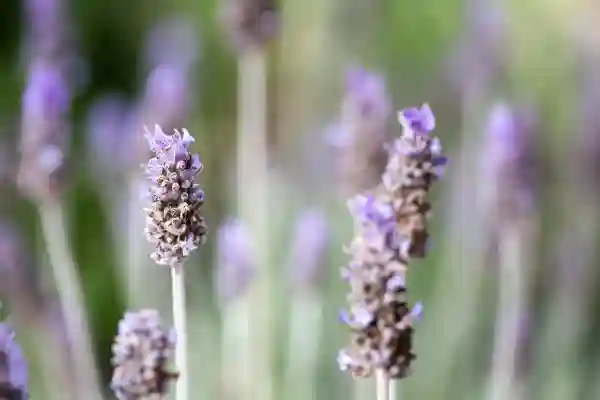
How to make your own relaxing bath salts
- 1 person
- 10 minutes
How to make your own relaxing bath salts
What are bath salts?
Bath salts have long been used as an easy and affordable way to soothe body and soul in many cultures. They’re commonly made from a blend of different salts such as sea salt, Epsom salts and Himalayan pink salt. These easily dissolve in warm bath water to soothe aches and pains, and calm the mind through the addition of some of our favourite relaxing herbs. And the good news is you don’t have to have a bath to benefit as bath salts can also be used in a calming foot soak or even the shower!
Let’s look at each type of salt in turn:
Sea salt’s benefits depend on where the salt was sourced from. Dead Sea salts are believed to be some of the highest quality sea salt and are known to promote relaxation, sore muscle release and relief for certain skin conditions. Other types of quality sea salt are more easily available from the supermarket and are great for making your own bath salts. All types of sea salt are rich in trace minerals important for health.
Epsom Salt: Epsom salt is not actually a salt but is Magnesium sulfate and is probably the most famous aid in helping to relax sore muscles. It works by releasing magnesium and sulfate into water which helps to relieve muscle aches. Combining Epsom salts with other types of salts and herbs helps enhance this effect.
Pink Himalayan Salt is a type of mineral salt which comes from ancient sea salt deposits from millions of years ago. These were preserved and protected from pollutants by layers of sediment from volcanic eruptions, so are thought to be very pure. Like sea salt, Himalayan salts are packed with valuable essential minerals, but they have even more than sea salt giving them a beautiful, natural pink colouring. Look for companies offering sustainable harvesting of this precious resource.
For relaxing bath salts you will need:
Epsom salts/ Himalayan pink salt/ sea salt (we like to use a blend of all 3 but 2 works fine, or even just 1 type)
Lavender, rose and chamomile essential oils -30 drops in total (again, we like this blend but you don’t need all 3)
Baking soda (helps disperse the essential oils)
Optional dried lavender/ chamomile/ rose petals- you can open up a Three Chamomile or Love tea bag
Glass storage jar (kilner jars work well)
Mixing bowl and spoon

How to make bath salts:
Combine 2 cups of each of the salts (or 6 cups of one type) in a bowl
Add ½ cup of baking soda and stir well
Add 30 drops of essential oils of your choice and stir
Optional: Blend dried herbs and flowers in a mini blender before mixing well one last time
Spoon into a clean glass jar for storage
We like to label what we’ve made as it’s so easy to forget what you used if you want to repeat successful blends!
The power of aromatherapy
Essential oils have been used for thousands of years for their exquisite aromas and natural healing powers. Rich in botanical activity and antioxidants, plant oils encourage radiant, healthy skin, working at a cellular level to keep your complexion soft and looking youthful. By harnessing their therapeutic properties, aromatherapy works to improve your physical, mental and emotional wellbeing.
We especially like adding lavender to bath salts as its name comes from the Latin ‘lavare’ which means ‘to wash’! In ancient times, lavender was used to perfume clothes and bed linen due to washing and bathing not being common practice. Like chamomile and rose, it is packed with soothing essential oils which enhance the powerful benefits of soaking in bath salts. Lavender oil and chamomile oil also have anti-bacterial and anti-inflammatory effects beneficial for skin health. Research also suggests that breathing in lavender’s aroma could improve sleep quality. A systematic review of 15 studies found inhaling essential oils, including lavender, had positive effects in people with mild sleep disturbances (1).
Lavender bath salts can have some great benefits [ER1] for a calming bath, and chamomile essential oil is also very helpful. Recognised for its relaxing properties by the ancient Egyptians, Greeks and Romans, the chamomile flower is probably the most widely used herb for soothing stress. Chamomile’s relaxing effects also mainly comes from its beneficial essential oils, which have the ability to calm the nervous system and relieve both physical and psychological tension. It can also soothe muscle spasms and tension making it one of the most effective remedies for soothing the nervous system generally.
How to use your relaxing bath salts
In the bath:
The obvious one is to add a cup of your herbal salts to a warm bath for a soothing soak- one of the greatest gifts you can give yourself. For maximum effect, slowly pour 1-2 cups of salts under a hot running tap to release the essential oils into the steam and enhance the relaxing and therapeutic effect. For example, inhaling chamomile via a steam inhalation can help calm and moisten mucous membranes in respiratory infections. Then lie back and rest for up to 30 minutes in your home spa. It’s best not to stay longer than this as any longer may start to dry out your skin.
In the shower:
However, you can still use bath salts and enjoy some of the benefits they provide even if you don’t have a bath by converting them into a body scrub. This is very easy to do! Simply add an oil of your choice to the jar of salts so that the oil just covers the salts. Options include extra virgin olive oil, jojoba or sweet almond oil. It is important to use fine versions of whichever salts you use so they are not overly abrasive as the skin is delicate. Then gently apply some of the scrub to your body using your hands and leave on for a few minutes. The salts will gently exfoliate skin, the oils moisturise and the essential oil aromas relax!
As a foot bath:
You don’t have to get your whole body wet to benefit from herbal salts. Foot baths were traditionally a popular way to support circulation, relax the nervous system and support sleep. If you think of your feet as like the roots of a tree, a regular foot bath will keep your roots strong. It is encouraging to now see research supporting this ancient healing practice (2). To use bath salts in a foot soak simply add 1/2 cup of your relaxing salts to a large bowl of warm water (a clean washing up bowl works well) and stir to dissolve. Soak your feet for 15 minutes then dry thoroughly. Soaking your feet in a salt bath also makes it easier to exfoliate. Why not use the shower scrub recipe above to help remove any dead skin for a home spa treat?
Making your own calming bath salts is fun, affordable and effective. You can enjoy them on a weekly basis to help you unwind from your day and prepare for a good night’s sleep. However, it is generally a good idea to avoid a bath or shower an hour before or after eating or consuming alcohol.Bath salts are generally very safe for all but please take care if you are experiencing skin allergies. It is also advised to talk to your doctor before using bath salts if you have medical conditions such as heart disease or diabetes.
Lillehei, A.S. and Halcon, L.L., 2014. A systematic review of the effect of inhaled essential oils on sleep. The Journal of Alternative and Complementary Medicine, 20(6), pp.441-451
Saeki, Y., 2000. The effect of footbath with or without the essential oil of lavender on the autonomic nervous system: a randomized trial. International Journal of Aromatherapy, 10(1-2), pp.57-61.
